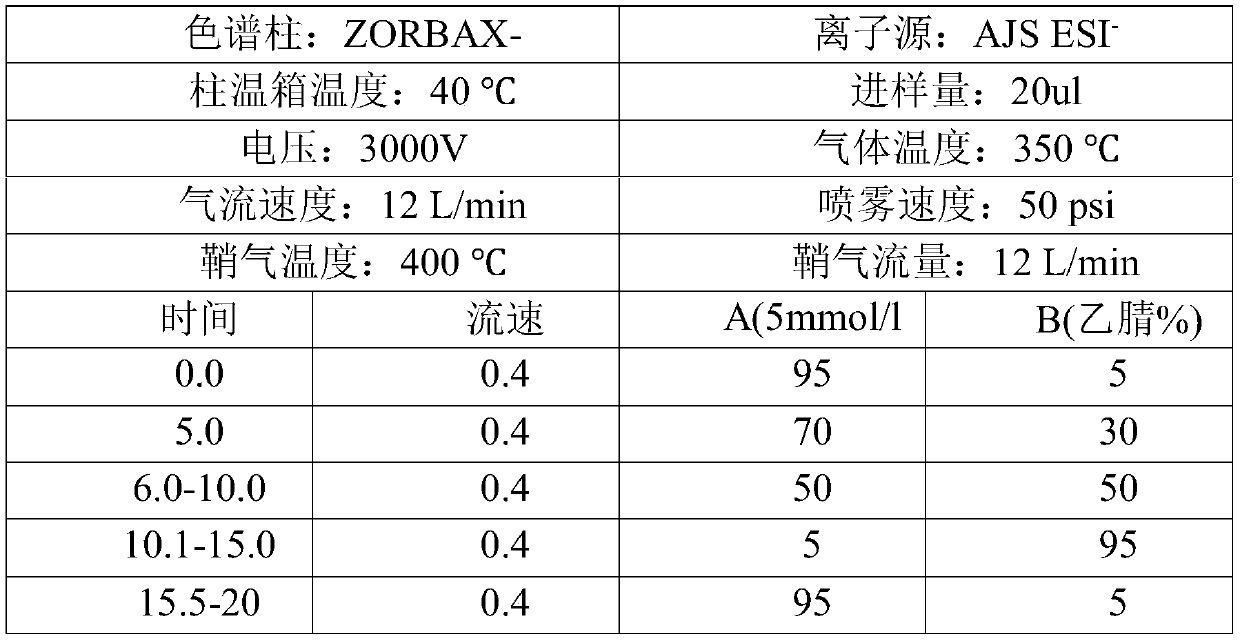Method for determinating glyphosate, aminomethylphosphonic acid and glufosinate pesticide residues in tea leaves
A technology for aminomethylphosphonic acid and pesticide residues, which can be used in measuring devices, instruments, scientific instruments, etc., and can solve the problems of high detection limit and unreachable
- Summary
- Abstract
- Description
- Claims
- Application Information
AI Technical Summary
Problems solved by technology
Method used
Image
Examples
Embodiment Construction
[0013] The technical solutions in the embodiments of the present invention will be clearly and completely described below.
[0014] A method for determining glyphosate, aminomethylphosphonic acid and glufosinate-ammonium pesticide residues in tea leaves provided by the invention uses liquid chromatography tandem mass spectrometry, comprising the following steps:
[0015] 1) Weigh the sample and add 5-20mL methanol water to fully vortex, add 5-20mL dichloromethane, vortex, mix, ultrasonicate, take out, centrifuge, and take the supernatant to be purified;
[0016] 2) Put 2mL of the above supernatant on the activated CAX purification cartridge, elute with CAX eluent, collect in a 10ml round-bottomed plastic tube, blow with nitrogen to nearly dry, add 1mL of 1-5% boric acid buffer solution, and set aside;
[0017] 3) Take the spare solution, mix well, add 200 μL FMOC-Cl derivatization reagent, vortex mix for 1 min, derivatize overnight at room temperature, centrifuge at 4500 r / min...
PUM
| Property | Measurement | Unit |
|---|---|---|
| Granularity | aaaaa | aaaaa |
Abstract
Description
Claims
Application Information
 Login to View More
Login to View More - R&D Engineer
- R&D Manager
- IP Professional
- Industry Leading Data Capabilities
- Powerful AI technology
- Patent DNA Extraction
Browse by: Latest US Patents, China's latest patents, Technical Efficacy Thesaurus, Application Domain, Technology Topic, Popular Technical Reports.
© 2024 PatSnap. All rights reserved.Legal|Privacy policy|Modern Slavery Act Transparency Statement|Sitemap|About US| Contact US: help@patsnap.com








